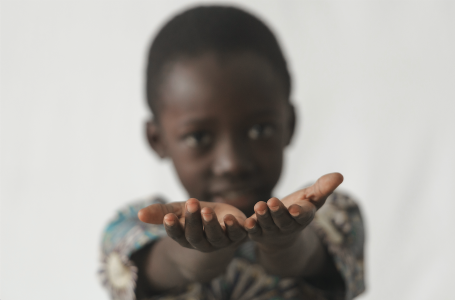Show readers one person — not 1,001
Quick! Would you rather spend $10 million to save 10,000 lives from a disease that caused 15,000 deaths a year, or save 20,000 lives from a disease that killed 290,000 people a year?

“If I look at the mass, I will never act. If I look at the one, I will.”
— Mother Teresa
That’s the decision psychologist Paul Slovic of the University of Oregon asked two groups of research participants to make, author Shankar Vedantam reports in his new book, The Hidden Brain. Overwhelmingly, the research participants said they’d rather spend money saving the 10,000 lives rather than the 20,000 lives.
Rather than invest in saving the most lives, these folks sought to save the largest proportion of lives within a group of victims.
Are they crazy?! Nope. That’s just how our brains work.
“The reason human beings seem to care so little about mass suffering and death is precisely because the suffering is happening on a mass scale. The brain is simply not very good at grasping the implications of mass suffering,” Vedantam writes.
“Americans would be far more likely to step forward if only a few people were suffering or a single person were in pain. … We are best able to respond when we are focused on a single victim.”
So we don’t feel 20 times sadder when we learn that 20 people have died in a disaster than we do when we learn that one person has died. We don’t even feel twice as sad.
In fact, we may actually care less.
Rokia vs. statistics
Consider another study (PDF), this one by researchers at the University of Pennsylvania, Carnegie Mellon University and Decision Research.
In this study, people read one of two letters. The first focused on facts and stats about the magnitude of the problems facing children in Africa:
- Food shortages in Malawi are affecting more than 3 million children.
- In Zambia, severe rainfall deficits have resulted in a 42% drop in maize production from 2000. As a result, an estimated 3 million Zambians face hunger.
- Four million Angolans — one third of the population — have been forced to flee their homes.
- More than 11 million people in Ethiopia need immediate food assistance.
The second shared the story of a single African girl named Rokia:
On average, the people who read the statistics contributed $1.14. The people who read about Rokia contributed $2.38 — more than twice as much.
“It seems that most people have something in common with Mother Teresa,” write Chip Heath and Dan Heath in Made to Stick. “When it comes to our hearts, one individual trumps the masses.”
Trying to raise awareness of your product, service, program or cause? Tell a good human interest story.
Story + statistics
Next, the researchers gave a third group of people both sets of information — the statistics and the story about Rokia. Perhaps, they thought, the combination of statistics and stories — the power of individual need coupled with the statistical scale of the problem — would inspire a whole new level of giving.
Not so. The people who received both letters gave $1.43, almost a dollar less than the people who read the Rokia story alone. Somehow the statistics — evidence of massive human suffering — actually made people less charitable.
On average, the people who read statistics about mass suffering contributed $1.14. The people who read about one little girl contributed $2.38 — more than twice as much.
“The mere act of calculation reduced people’s charity,” the Heaths write. “Once we put on our analytical hat, we react to emotional appeals differently. We hinder our ability to feel.”
Vedantam agrees.
“We respond to mass suffering in much the same way that we respond to most things in our lives. We fall back on rules of thumb, on feelings, on intuitions,” he writes.
“Our empathic telescopes are activated when we hear a single cry for help — the child drowning in the pond, the dog abandoned on an ocean. When we think of human suffering on a mass scale, our telescope does not work, because it has not been designed to work in such situations.”
‘The identifiable victim effect’
This “identifiable victim effect” is nothing new, write the University of Pennsylvania researchers: People donated:
- More than $700,000 to help “Baby Jessica” when she fell in a well near her home in Texas.
- £275,000 for the medical care of a wounded Iraqi boy named Ali Abbas.
- Some $48,000 to save a dog stranded on a ship adrift on the Pacific Ocean near Hawaii.
No wonder newspapers and magazines focus on the human-interest story behind the story, and not just on the news story.
Appeal to the hidden brain
We’re not bad — I mean, Mother Teresa’s brain worked the same way. As humans, it turns out, we’re just not very … evolved.
“Humans are the only species that is even aware of large-scale suffering taking place in distant lands; the moral telescope in our brain has not had a chance to evolve and catch up with our technological advances,” Vedantam writes. “Our conscious minds can tell us that it is absurd to spend a boatload of money to save one life when the same money could be used to save 10. But in moral decision-making, it is the hidden brain that usually carries the day.”
So how can you improve your campaign results?
Show readers one person — not 1,001.
____
Sources: Shankar Vedantam, “The little dog lost at sea,” The Week, Feb. 16, 2010
Deborah A. Small, George Loewenstein, Paul Slovic, “Can Insight Breed Callousness? The Impact of Learning about the Identifiable Victim Effect on Sympathy” (PDF), University of Pennsylvania, 2005
Chip Heath and Dan Heath, Made to Stick, Random House, 2007

Leave a Reply